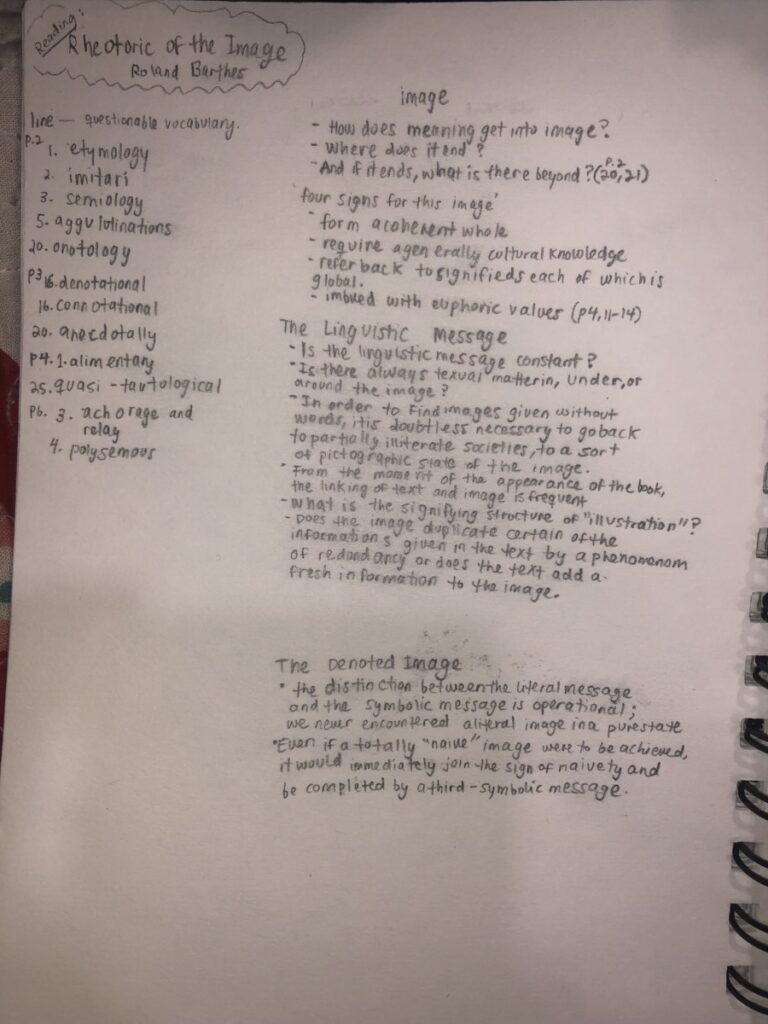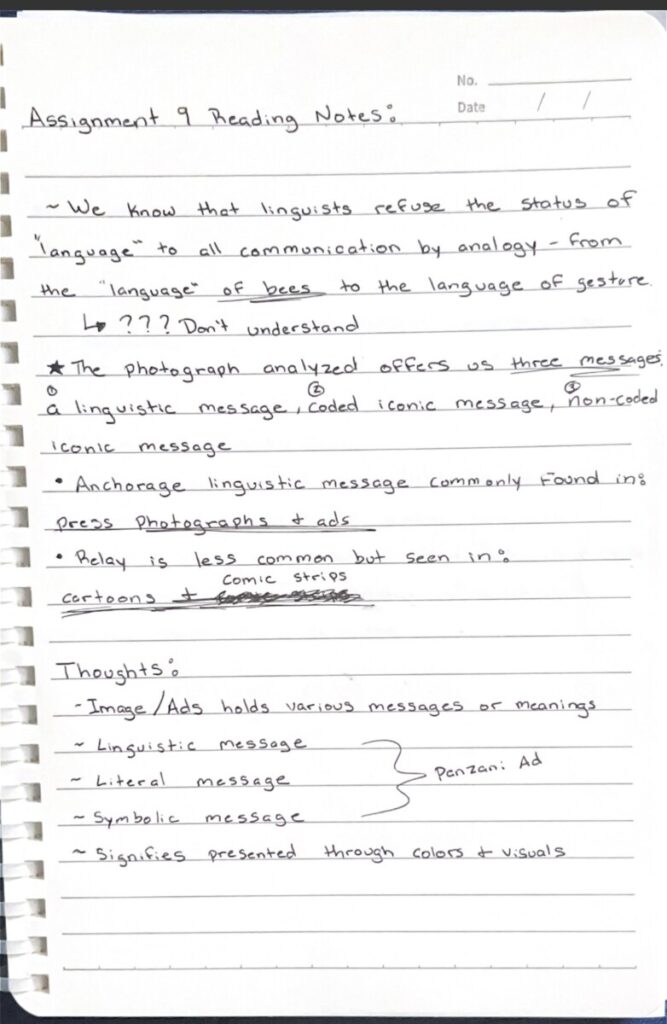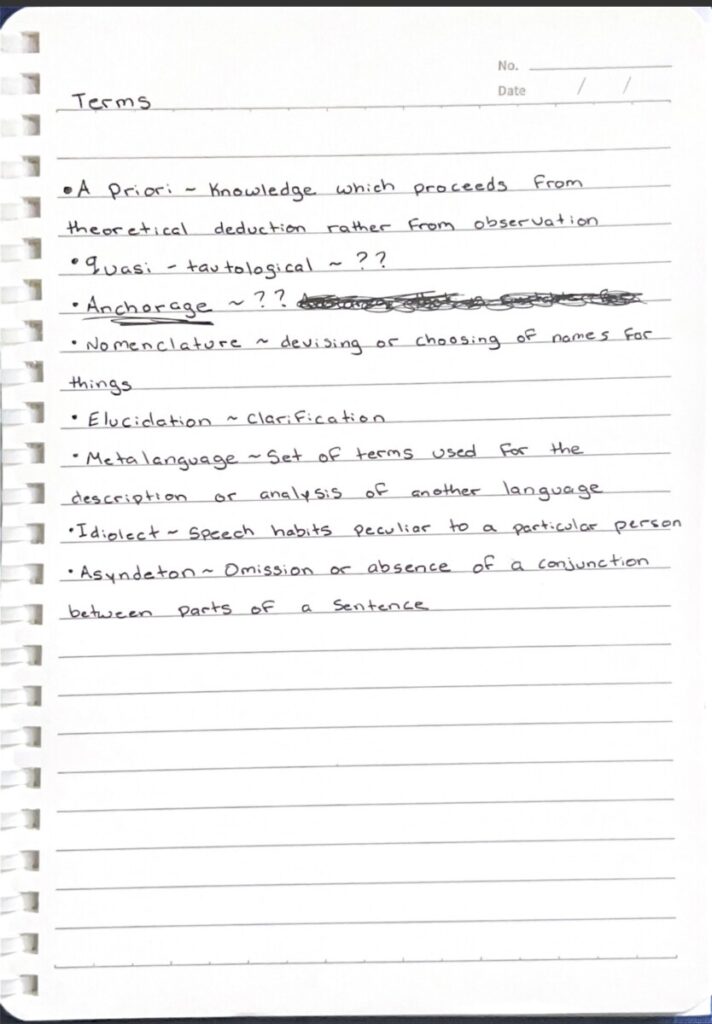Although linguists refuse the status of language to all communication, a message can be inferred not only from the mere simple agglutination of symbols but more precisely from the true system signs of the image. But often, image is perceived to be weak in respect of meaning, and as a result, some perceive an image to be an extremely rudimental system when compared with language, while others feel that the ineffable richness embedded therein can be fully exhausted.
In reference to the presented article, Rhetoric of the Image, the author, Roland Barthes, informs that regardless of the supposed limitation of meaning, it supports a veritable ontology of the signification process (Barthes, 2015). But seemingly, the author preferably analyses an advertising message since they are undoubtedly intentional.
While analyzing the presented, Panzani advertisement image, the author initially identifies the most obvious aspects supporting linguistics, including caption and labels inserted, allowing code identification. Devoid of the linguistic message leaves a pure image asserted to be twofold: denotational and connotational, and since the signs are not linear, the order is unimportant (Barthes, 2015). The author then proceeds to the iconic message, the relation between signified and signifier, which is asserted to be quasi-tautological, and the transition. A satisfactory analysis should present the linguistic message as well as a coded-iconic and non-coded iconic message.
Questions Relating to the Article
How does one determine the nature of transformation between the signifieds and signifiers?
Why does the author imply that the absence of code reinforces the myth of photographic naturalness?
The author emphasizes that coding of the denoted message consequently affects connoted message since the literal coding prepares and facilitates connotation by establishing a certain discontinuity in the image at once. What does this imply?
A core aspect differentiating the message presented in drawing and photograph is the ethic. What other aspects discriminate against these elements?
Month: April 2022 (Page 4 of 5)
Important words which meanings were not totally clear to me are:
Etymology
Assonance
Tautological
Italianicity
Connotation
Unclear passages:
Pag 9 (of the pdf)
Film can no longer be seen as animated photographs: the having-been-there gives way before a being-there of the thing; which omission would explain how there can be a history of the cinema, without any real break with the previous arts of fiction, whereas the photograph can in some sense elude history (despite the evolution of the techniques and ambitions of the photographic art) and represent a “flat” anthropological fact, at once absolutely new and definitively unsurpassable, humanity encountering for the first time in its history messages without a code. Hence the photograph is not the last (improved) term of the great family of images; it corresponds to a decisive mutation of informational economies.
Pag11
Thus the rhetoric of the image (that is to say, the classification of its connotators) is specific to the extent that it is subject to the physical constraints of vision (different, for example, from phonatory constraints) but general to the extent that the “figures” are never more than formal relations of elements.
(I am sorry for the late submission. I wanted to summarize my notes but I don’t think I will have to time to do it, so I am sending the handwritten notes. I am sorry for the low quality pictures and the bad calligraphy. )
Terms I didn’t understand:
Etymology Imitari Semiology Agglutinations En abyme Connotational Italianicity
The article talks about the usage of words and imagery as well as its coexistence as a whole. It speaks about the example of a Panzani advertisement and its use of imagery as its primary source method to express the message, while the logos/caption on the product serving as a sort of support of the ad. The article speaks of the potential disconnect the usage of both actual sentence and imagery would have had for the advertisement.
Terms
- etymology
- quasi-tautological
- anchorage
- polysemous
- syntagm
Notes:
-analyzed photograph offers three forms of messages
the linguistic message, coded iconic message, non-coded
iconic message [
-the literal message supports the symbolic message of
the image
-In the linguistic message, an image has a linkage between
the text and the image. Historically, images within books
contained text that was used to decipher or enhance a
message. Even now, mass communication uses text along
with images to give context, it is intentional.
-Literal message from images = what is it?
-texts direct the viewer toward a specified meaning,
their eye will follow based on the text, so viewers will
not receive the whole messages
-Denoted message= photograph present still life, real life
A drawing replicates a scene but every painter/drawer has
their own style, and can depict the same object and many
different ways.
The second short paper is due for next class. There are also two short texts to read, listed as 10b. Note: you do not need to submit a response to those texts.
Paper Requirements:
The second 2-3 page paper is a response to Roland Barthes’ Rhetoric of the Image. The objective for this paper is to analyze the rhetorical elements of a recent advertisement. The ad should be from a print magazine.
The chosen advertisement must use photographic imagery, and must include text. Begin by describing the image in detail, examining the characteristics of the pictured objects, models, environment, etc., as well as the layout, typography, interaction of forms, image style and composition of the entire ad. Try to identify all of the signs at work in the image.
Make your best attempt to articulate the meaning of the image, using Barthes’ terms. What are the linguistic messages? What are the non-coded iconic messages? What are the coded iconic messages? Identify the denotative and connotative aspects, the use of anchorage and relay, the semantic and lexical components, etc. Consider the effectiveness of the advertisers’ rhetoric, and the ideological metalanguage employed.
This response will be submitted as a 750-1000 word typewritten paper, double-spaced in 12 pt. Times New Roman. Include an image of the advertisement under consideration. All references and quotations, including image sources should be properly cited in MLA format. Upload a PDF of your paper to a new Post on OpenLab before class on the 13th. Please also add an image of the ad you examine in your post (this will allow your peers to see the image without opening the pdf of your paper).
Once again, please note: I am well aware of the versions of this essay that can be found online. Submissions that address the ads examined in those versions (i.e. the chopped up Heinz bottle, the VW porcupines) will not be accepted.
The first item to complete for April 13 is your second 2-3 page paper (See Assignment 10a).
Once this is completed there are two new readings for next week. These readings are unrelated to the paper. It is recommended that you complete them after the paper. They are as follows:
Paul Rand, Good Design is Goodwill (1987):
Denise Scott Brown, Steven Izenour & Robert Venturi, Learning from Las Vegas: The Forgotten Symbolism of Architectural Form (1972):
While there is not a written response to these particular texts, you will be expected to discuss them in class on the 13th. Please budget your time so that you can give proper attention to these readings.
Etymology is the study of the origin of words and the way in which their meanings have changed throughout history.
Thus we find ourselves immediately at the heart of the most important problem facing the semiology of images; a fancy way of saying our heart is always imagining?
Thus from both sides, the image is felt to be weak in respect of meaning; our perspective on the image can be many different perspectives not everyone may see it as “weak”
Points I liked in the passage
e, evoking the memory of innumerable alimentary paintings sends us to an aesthetic signified: the”nature morte” or, as it is better expressed in other languages, the “still I’fe”3; the knowledge on which this sign depends is heavily cultural.
Polysemy poses the question of meaning and this question always comes through as a dysfunction, even if this dysfunction is recuperated by society as a tragic
Hence in every society, various techniques are developed intended to fix the floating chain of signifieds in such a way as to counter the terror of uncertain signs; the linguistic message is one of these techniques.
; the text directs the reader through the signifieds of the image
The distinction between the literal message and the symbolic message was operational
Unfamiliar vocabulary
denoted, is a cclcJed message
Apprenticeship
Brute
Anthropological
Spacial immediacy
Definitively unsurpassable
Italiancity
KEY WORDS
- Imitary
- Image
- Sign
- Symbol
- Linguistic
- Message
- Code
- Italianicity
- Cultural message
- Literal message
- Symbolic message
- Rhetoric
- Anchorage and relay
UNKNOWN WORDS
- Ontology
- Tautological
- Polysemous
- Denotational
- Connotational
- Syntagm
- Metalanguage
NOTES
- “Thus we find ourselves immediately at the heart of the most important problem facing the semiology of images: can analogical representation (the”copy”) (produce true systems of signs and not merely simple agglutinations of symbols?” – What is the difference between sign and symbol? I don’t quite understand.
- “image is an extremely rudimentary system in comparison with language and those who think that signification cannot exhaust the image’s ineffable richness”
- “The linguistic message is this twofold (at least in this particular image): denotational and connotational” – What does the author want to mean by denotational and connotational?
- “message without a code” – I don’t understand what this means.
- “Does the image duplicate certain of the information given in the text by a phenomenon of redundancy or does the text add fresh information to the image?”
- What are anchorage and relay according to the author?
- “the anchorage may be ideological and indeed this is its principal function; the text directs the reader through the signifieds of the image, causing him to avoid some and receive others; by means of often subtle dispatching,t remote-controls him towards a meaning chosen in advance.” – ????
- “the words, in the same way as the images, are fragments of a more general syntagm and the unity of the message is realized at a higher level, that of the story, the anecdote, the diegesis…” – What syntagm means?
- “This evictive state naturally corresponds to a plenitude of virtualities: it is an absence of meaning full of all the meanings… but this intelligibility remains virtual by reason of its very poverty, for everyone from a real society always disposes of knowledge superior to the merely anthropological and perceives more just than the letter.” – ?????????
- Photography and drawing






Recent Comments